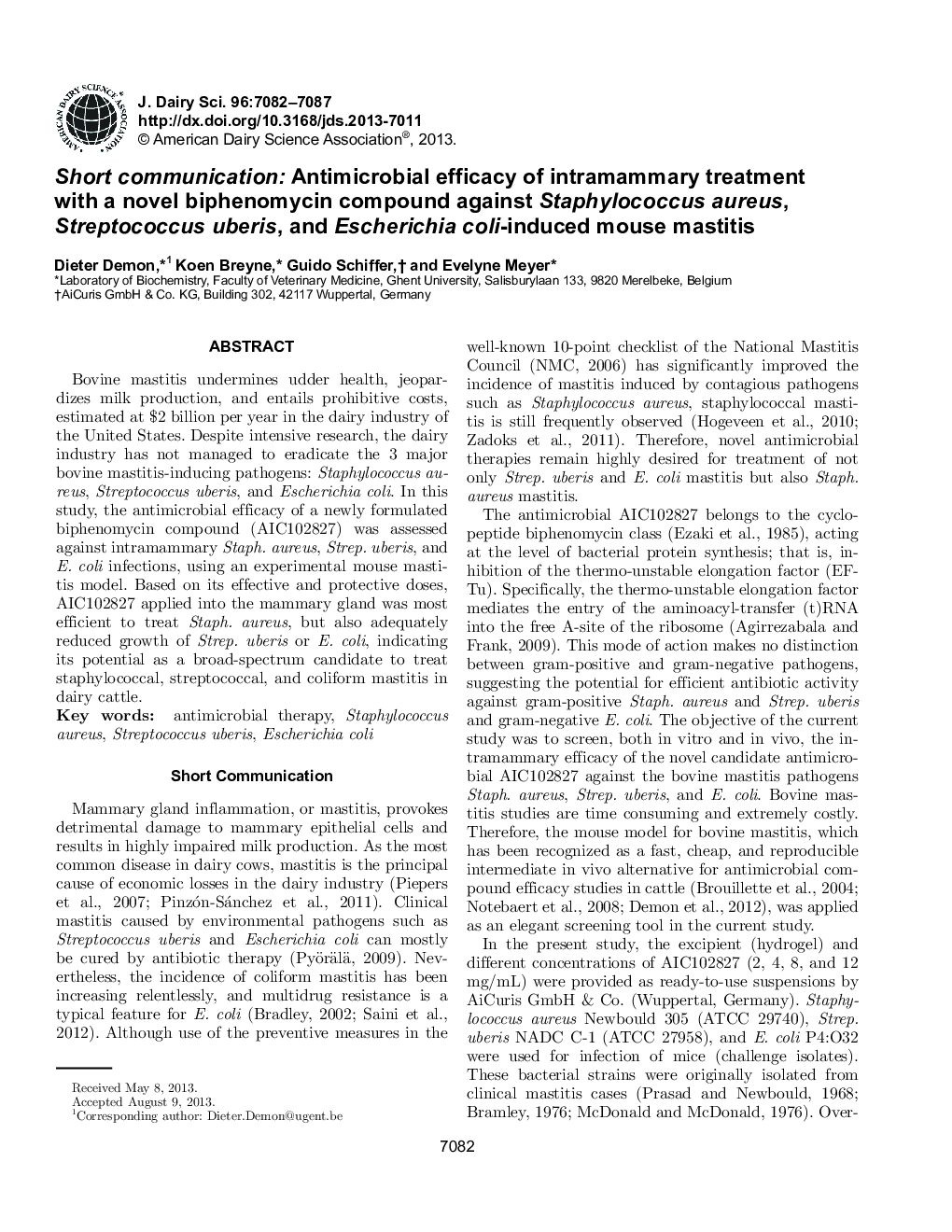| Article ID | Journal | Published Year | Pages | File Type |
|---|---|---|---|---|
| 10975032 | Journal of Dairy Science | 2013 | 6 Pages |
Abstract
Bovine mastitis undermines udder health, jeopardizes milk production, and entails prohibitive costs, estimated at $2 billion per year in the dairy industry of the United States. Despite intensive research, the dairy industry has not managed to eradicate the 3 major bovine mastitis-inducing pathogens: Staphylococcus aureus, Streptococcus uberis, and Escherichia coli. In this study, the antimicrobial efficacy of a newly formulated biphenomycin compound (AIC102827) was assessed against intramammary Staph. aureus, Strep. uberis, and E. coli infections, using an experimental mouse mastitis model. Based on its effective and protective doses, AIC102827 applied into the mammary gland was most efficient to treat Staph. aureus, but also adequately reduced growth of Strep. uberis or E. coli, indicating its potential as a broad-spectrum candidate to treat staphylococcal, streptococcal, and coliform mastitis in dairy cattle.
Related Topics
Life Sciences
Agricultural and Biological Sciences
Animal Science and Zoology
Authors
Dieter Demon, Koen Breyne, Guido Schiffer, Evelyne Meyer,
